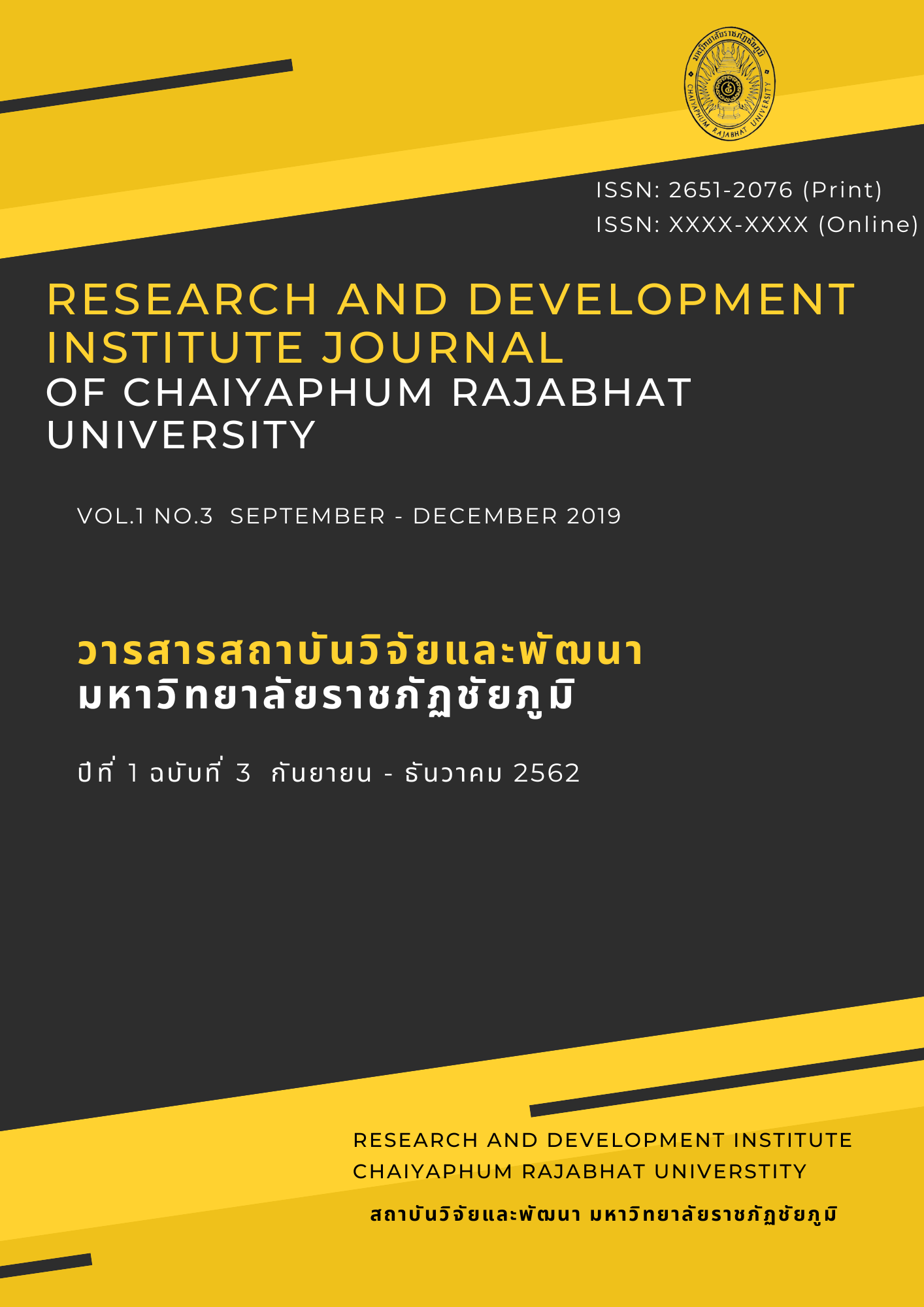The Development of Inspirational Test in Learning Science for Junior High School Students
Main Article Content
Abstract
This study aimed at auditing the quality of inspirational test in learning situational science for junior high school students. The sample consisted of 709 students in schools under the Regional Education Office, Chaiyaphum province during the second semester of 2017 academic year. The research instruments were 2 types of inspirational test in learning situational science for junior high school students i.e., 4-choice inspirational test in learning situational science and 5-scale inspirational test in learning science. SPSS for Windows was employed to analyze descriptive statistics, index of item objective congruence, Pearson correlation coefficient, and Cronbach's alpha coefficient while Mplus Version 7.2 was implemented for exploratory factor analysis, second order confirmatory factor analysis, multitrait-multimethod analysis, and cross validation analysis.
The findings were as follows: According to construct validity check, the results can be described into five important points. 1) The result of multitrait-multimethod analysis was also consistent with empirical data (CFI=1.000, TLI=1.011, RMSEA=0.000, SRMR=0.003, and /df = 0.3672). The inspirational test in learning situational science demonstrated low level of convergent validity, validity, and discriminant validity. 2) The result of cross validation analysis revealed the approximation between statistics, index, and standardized factor loading coefficient of the inspirational test in learning science. And 3) the result of analyzing inspirational test in learning situational science employing known-group technique found its construct validity with statistically significant difference of .01, both in each aspect and as a whole.
Article Details
Permission to use text, content, images, etc. of publication. Any user to read, download, copy, distribute, print, search, or link to the full texts of articles, crawl them for indexing, pass them as data to software, or use them for any other lawful purpose. But do not use it for commercial use or with the intent to benefit any business. Published under a Creative Commons Attribution-NonCommercial-NoDerivatives 4.0 International License.

This work is licensed under a Creative Commons Attribution-NonCommercial-NoDerivatives 4.0 International License

